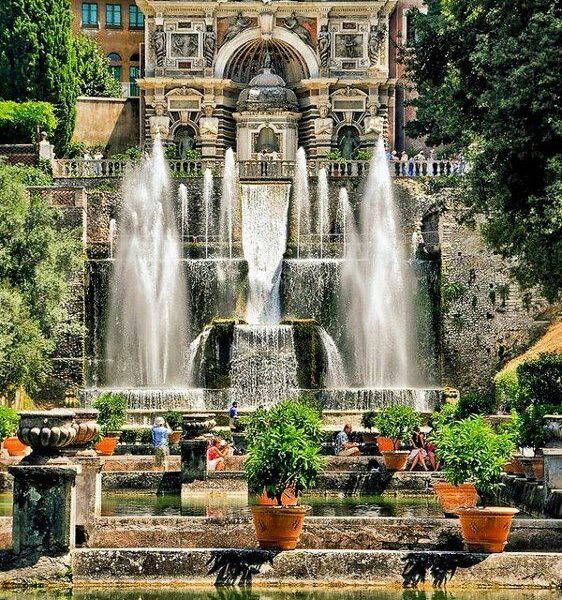The emperor’s Summer Residency – Tivoli
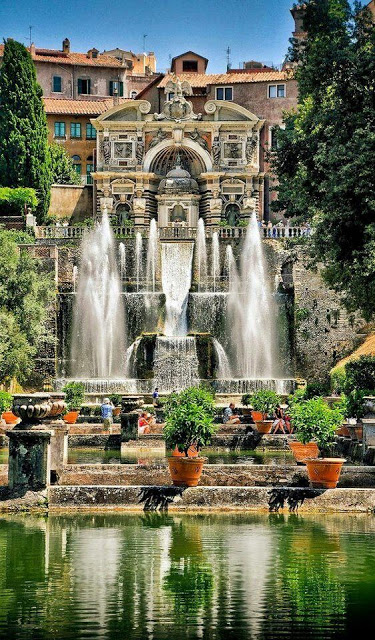
Without a doubt, Rome is a truly amazing city. You could spend months there and not see anywhere near all there is to see. However, in a short time you can only visit so many museums and churches.
So in my view, if you have more than a couple of days in Rome, it is time to explore outside the city.
Again, there are countless options, however, after 15 years as a Roman tour guide, my favorite destination is Tivoli.
Tivoli is a hillside town about 30 km from Rome. It is an ancient city, originally called Tibur, now a bustling town of nearly 60,000. In the immediate vicinity visitors can pass through not centuries but millennia. From the ancient 2nd century villa of Emperor Hadrian, to the 16th century renaissance jewel of the Villa D’Este to the 300 year old gorgeous restaurant Sibilla in a day!

Unfortunately public transport options to Tivoli from Rome aren’t great. There are trains from Stazione Tiburtina in Rome to the town of Tivoli with sporadic buses that then take you to Hadrian’s Villa which is 5 km away in the valley underneath the town. However, from experience I believe it is imperative (excuse the pun!) to visit Hadrian’s Villa first as there is a lot of walking involved and at least a few hours, preferably 3, are needed to see the site well. There are no trains directly there so you must take an hour and a half bus ride that leaves you almost a kilometer from the site. There is then an infrequent bus to get to the town of Tivoli. So for me Villa D’Este (in the town centre) is the preferred site after lunch.
True, you could spend hours at the renaissance spectacular which is the Villa D’Este however a 1 or 2 hour passeggiata (Italian post-meal digestive promenade) gives you a real appreciation of the magnificence of this 500 fountain extravaganza.
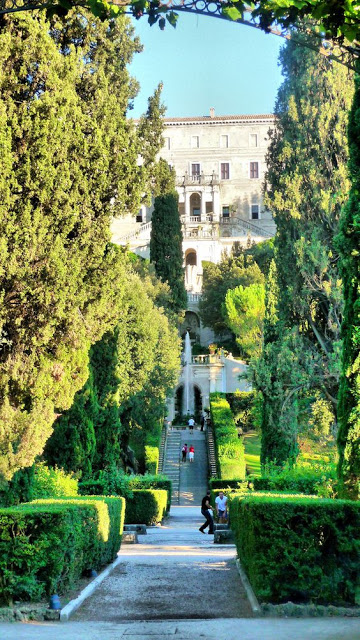
Therefore, it might seem a luxury but for me the only way to truly enjoy this day trip is to either hire a car, or even better a car and driver (and even better a guide) for the day. Sure, it is more expensive than bus and train tickets, but it utilizes time so much better. How many times will you visit this incredible place?!
A warning for those with walking issues, entrance to the palace is via a 250 meter quite steep hill and the grounds of the villa itself are extensive and almost never well paved. Just before the actual entrance to the Villa, at the top of the hill, is a small visitors’ centre which houses an impressive, to scale, reconstruction of the entire area. There is also always someone to provide information (unfortunately often their English isn’t great but they try their best and are usually very friendly).
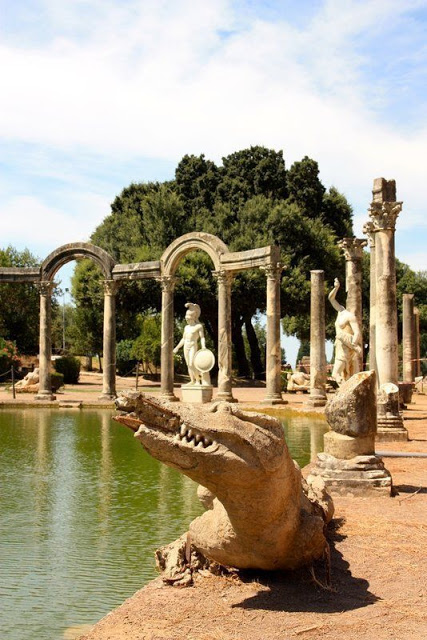
Although there is always restoration work going on at Hadrian’s Villa, walking through the vast complex it is possible to get a real sense of the opulence and power of the Roman Empire in its golden days. This early second century ruler preferred living there than among the constant gossip and intrigue in the capital, not least because Hadrian was possibly Rome’s most openly gay emperor, a fact looked down upon by the conservative Romans. Not just an imperial palace, it was a veritable city, with private quarters (Hadrian’s favorite refuge was the so-called maritime theater, a small artificial island complete with study, bedroom and private loo!) libraries, recreational and dining areas reminiscent of the great Egyptian and Greek landmarks, huge public and private baths, its own theater and accommodation for both important visitors and the thousands of workers, free and slaves needed to make the whole villa function. Unbelievable, but there was even central heating on the second floor of his private palace!
As a tour guide I have my own route through the villa but it really is a place to wander. There are signposts to direct you but no specific way to get through the grounds. Thankfully, finally, explanatory boards have been set up at some of the important sites. The must-sees are definitely the previously mentioned maritime theatre, the baths, and the Canopus. The Canopus is an artificial lagoon, replete with fish and turtles, fashioned after the great canal at Alexandria in Egypt with a huge nymphaeum ( open area banquet area). Nearby is a wonderful museum showing different artifacts found during the Villa’s excavation where there are also the only public toilets inside the site.
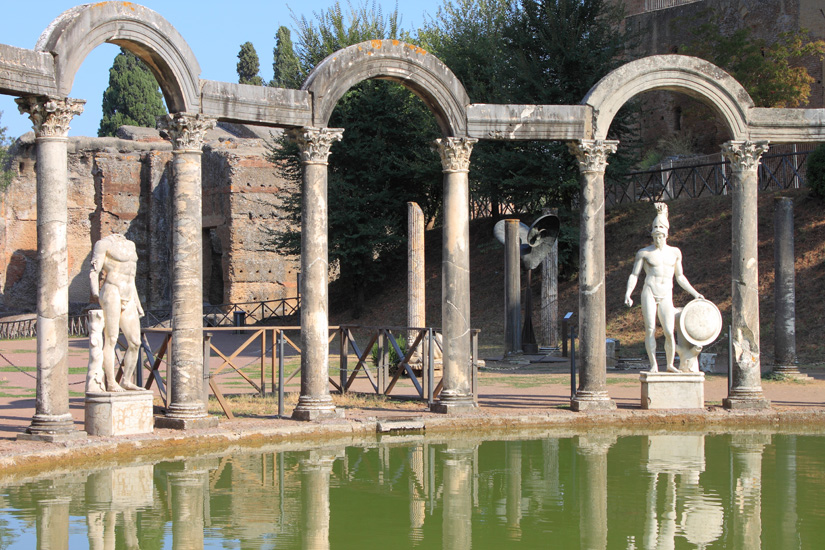
Having been abandoned not long after Hadrian’s death, the villa has been despoiled of almost all of its original decoration, mosaics and statuary. This most notably occurred in the 16th century when Cardinal Ippolito ii Este used the site to decorate his sumptuous villa in the town of Tivoli, 5km up the slope of the nearby Sabine hills. Don’t worry, for after a mandatory lunch break, this is the next destination on this excursion into the Roman countryside.
It is easily possible to wander through Hadrian’s Villa for the entire day. However, there is only one average over-priced restaurant/cafe within this archaeological site. And you can only look at ruins for so long. Along with the Villa D’Este, no less important for an unforgettable day is my favorite restaurant in all of Italy, for its food, the service and the amazing setting and view, which is up in the town of Tivoli itself.
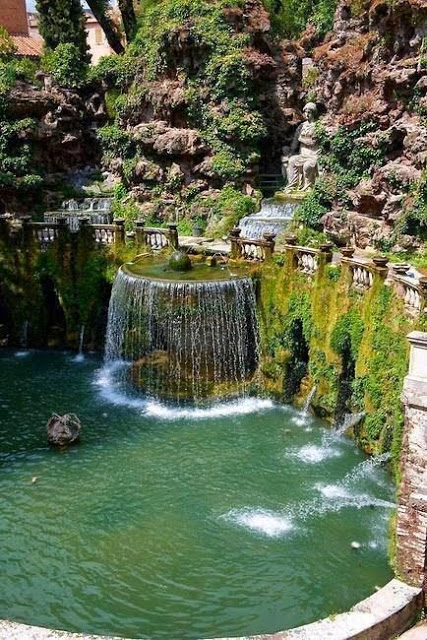
The 300 year old Sibilla, a Michelin star restaurant, perched on the cliff above the ravines and waterfalls of the river Aniene, sits next to 2 Roman temples (1 dedicated to the local Sibyl, or soothsayer, hence the name Sibilla). Before or between courses it is just so cool to be able to wander around these ancient structures whilst taking in the gorgeous natural beauty of the area. The outside dining area is shaded by Europe’s oldest wisteria vine. Kings, queens, popes, politicians and just about every VIP visitor to the area have patronized this restaurant in the last several centuries.
Many of their names are recorded on plaques displayed on the walls and make for interesting reading between bouts of dining pleasure. However, enough of the history of Sibilla, now the all-important aspect… the food! The menu here might not be as extensive as some but there really is something for everyone, including vegetarians and ciliacs. The stuffed zucchini flowers are to die for!!
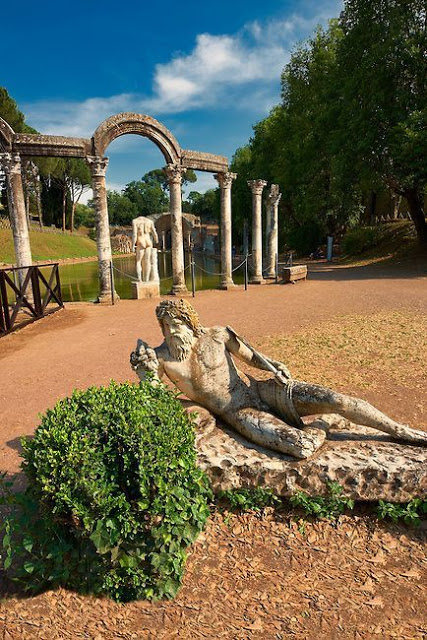
The reason why I recommend visiting Hadrian’s Villa in the morning is that after lunch (even a ‘light’ lunch), too much more activity is out of the question. It is now time for a truly incredible renaissance wonder – Villa D’Este which was built for Cardinal Ippolito II D’Este in the mid 16th century. He was grandson of the universally acknowledged most corrupt pope in history, Alexander vi Borgia, (father of at least 8 children, and yes, popes were ‘supposed’ to be celibate) and son of the most unfairly maligned (in my view) woman of the age, Lucrezia Borgia. Ippolito certainly had his ups and downs, at one point one of the richest men in Italy, and member of the private council of the king of France, he had 5 failed attempts to become pope and later had to pawn his silverware to continue paying for construction and decoration of his villa. For hundreds of years this villa was the model for all the great villas and gardens that followed, including Versaille.]
Despite the constant protests from Tivoli’s townspeople, homes and entire streets were demolished to create the space for the grounds of the palace and its gardens. Afterwards, even the course of the Aniene river was diverted to provide water for the villa’s hundreds of fountains, pleasing Tivoli’s residents even further, as you can imagine! As previously mentioned, Hadrian’s Villa was also almost completely despoiled of its decoration, building materials and statuary, all to decorate Ippolito’s new extravaganza.
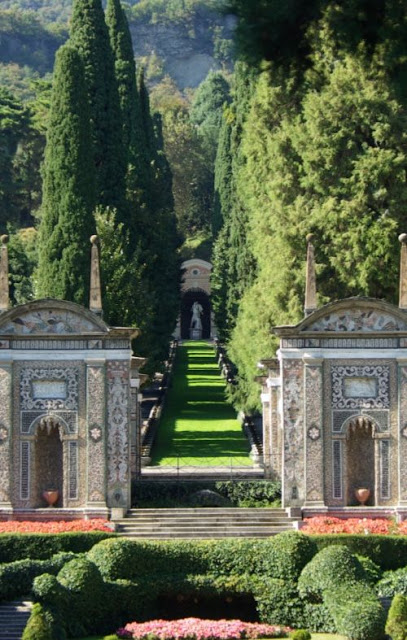
Originally visitors would have entered the villa through the monumental archway at the bottom of the gardens. How impressive it would have been looking at the immense terraced gardens with its fountains and the palace sitting up above! Entrance to and exit from the villa today however is from a small square ( with the ubiquitous gift shop incorporated into the ticket office) directly into his palace above. Next to the entrance is a modest looking church where the Cardinal was eventually buried, a far cry from the massive tombs for high clergy in Rome itself. However, it’s vicinity so close to his darling villa where he spent so much time and money seems to be appropriate.
Ippolito’s palace is grand, to be sure, and as you enter through his public and private rooms, decorated by some of the great 16th century artists, led by Cesare Nebbia one can appreciate the opulence of his home. However, empty after hundreds of years of no inhabitants it really all directs you to the view of the gardens down below. Again, like Hadrian’s Villa, there is no specific route to follow. The terraces lead the way through the different areas of fountains until you finally reach ground zero. On the way you can see the enormous fountain complex dedicated to Rome with all its references to the ancient city ( for example, Romulus and Remus and the she wolf, and the Tiber Island ) as well as the gorgeous oval fountain with its statue of the sibyl. These two marvels are connected by the avenue of the hundred fountains; each one carved with strange animal faces. From the left of the oval fountain you can reach yet another even more impressive work, underneath which are artificial grottoes, all cascading with water. From there you can descend to the pools and see the engineering miracle of the Water Organ at the bottom of the terraces which is simply a wonder.
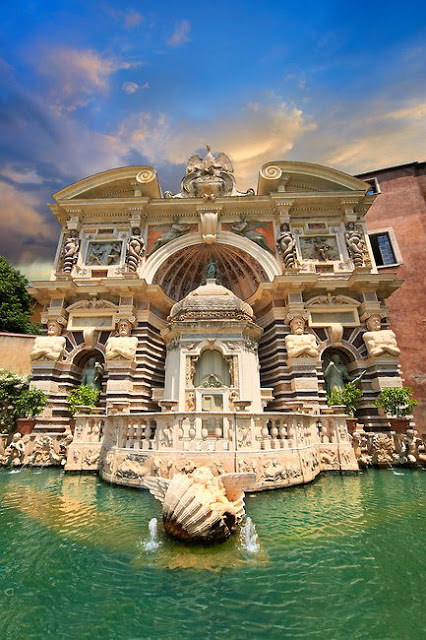
Once at the ground level of the villa you can see both the amazing view that the original visitors would have had as well as the beautiful views of the Roman countryside, reaching from Hadrian’s Villa all the way to Rome itself. Even without many of the crazy original elements of this renaissance wonderland it is impossible not to be impressed by its luxury and innovation.
After the trek back through the garden and its grounds it is time to go home to Rome. Whether it is with public transport or driving back it is just obvious the glories of this amazing country. There are countless experiences like this that you can have just in the environs of Rome. Just imagine what the entire country has to offer?! As an Australian I am constantly in awe of what we can actually see and experience from thousands or hundreds of years ago in Italy. After 17 years here I still have so much more to see. Bring it on!!
If you liked this article, read also: “HIDDEN GEMS OF ROME”
Written by : Vanessa Colwell
